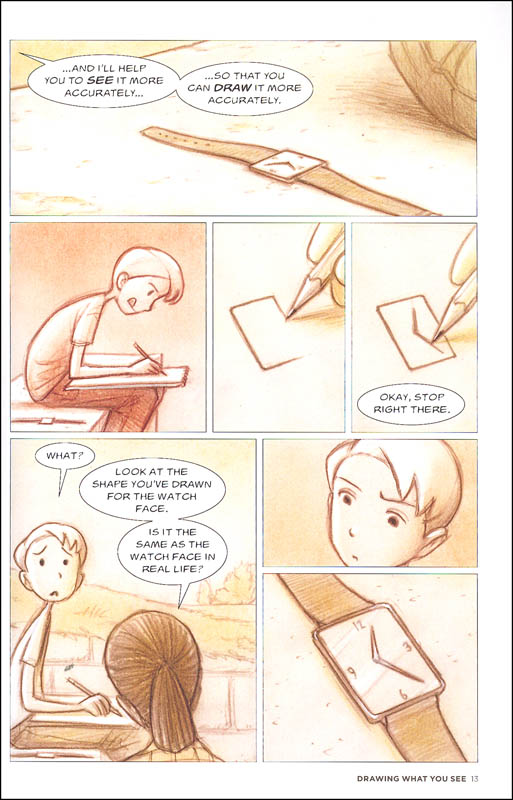

Graphic Novels: Resources for Teachers and Librarians is also a useful place to find information about comics suitable for your students. Most stores have quarter bins, boxes of comics selling for 25 cents each), which can provide inexpensive models and examples for students to explore. Picking up a few extra comics can come in handy later in the lesson when it is time to model page and panel layout. The best strategies to make sure titles are suitable for the classroom are to ask a sales clerk to help you identify appropriate titles and to actually read through the comics. This lesson uses Ultimate Spider-Man #1, but copies may be hard to find in bulk. Be sure to preview the selections to make sure they are classroom-appropriate. They are often eager to give these issues away. In addition, you may want to ask local comic shops if they have any backstock from Free Comic Book Day. To compile a collection of comic books for this activity, check with your school and public libraries.Students use spoken, written, and visual language to accomplish their own purposes (e.g., for learning, enjoyment, persuasion, and the exchange of information). Students participate as knowledgeable, reflective, creative, and critical members of a variety of literacy communities.ġ2.

Students use a variety of technological and information resources (e.g., libraries, databases, computer networks, video) to gather and synthesize information and to create and communicate knowledge.ġ1. Students adjust their use of spoken, written, and visual language (e.g., conventions, style, vocabulary) to communicate effectively with a variety of audiences and for different purposes.Ĩ. They draw on their prior experience, their interactions with other readers and writers, their knowledge of word meaning and of other texts, their word identification strategies, and their understanding of textual features (e.g., sound-letter correspondence, sentence structure, context, graphics).Ĥ. Students apply a wide range of strategies to comprehend, interpret, evaluate, and appreciate texts. Students read a wide range of literature from many periods in many genres to build an understanding of the many dimensions (e.g., philosophical, ethical, aesthetic) of human experience.ģ. Among these texts are fiction and nonfiction, classic and contemporary works.Ģ. Students read a wide range of print and nonprint texts to build an understanding of texts, of themselves, and of the cultures of the United States and the world to acquire new information to respond to the needs and demands of society and the workplace and for personal fulfillment.



 0 kommentar(er)
0 kommentar(er)
